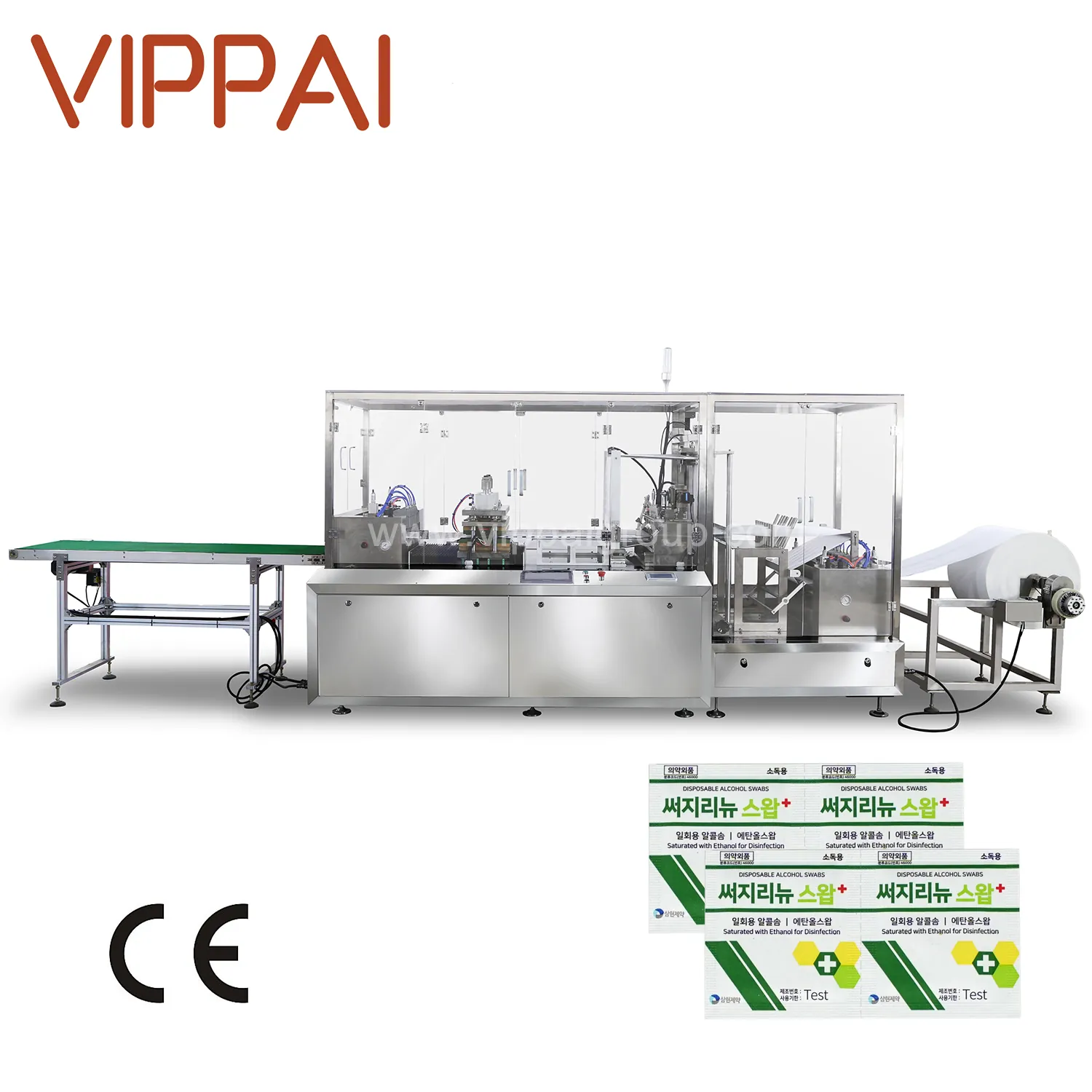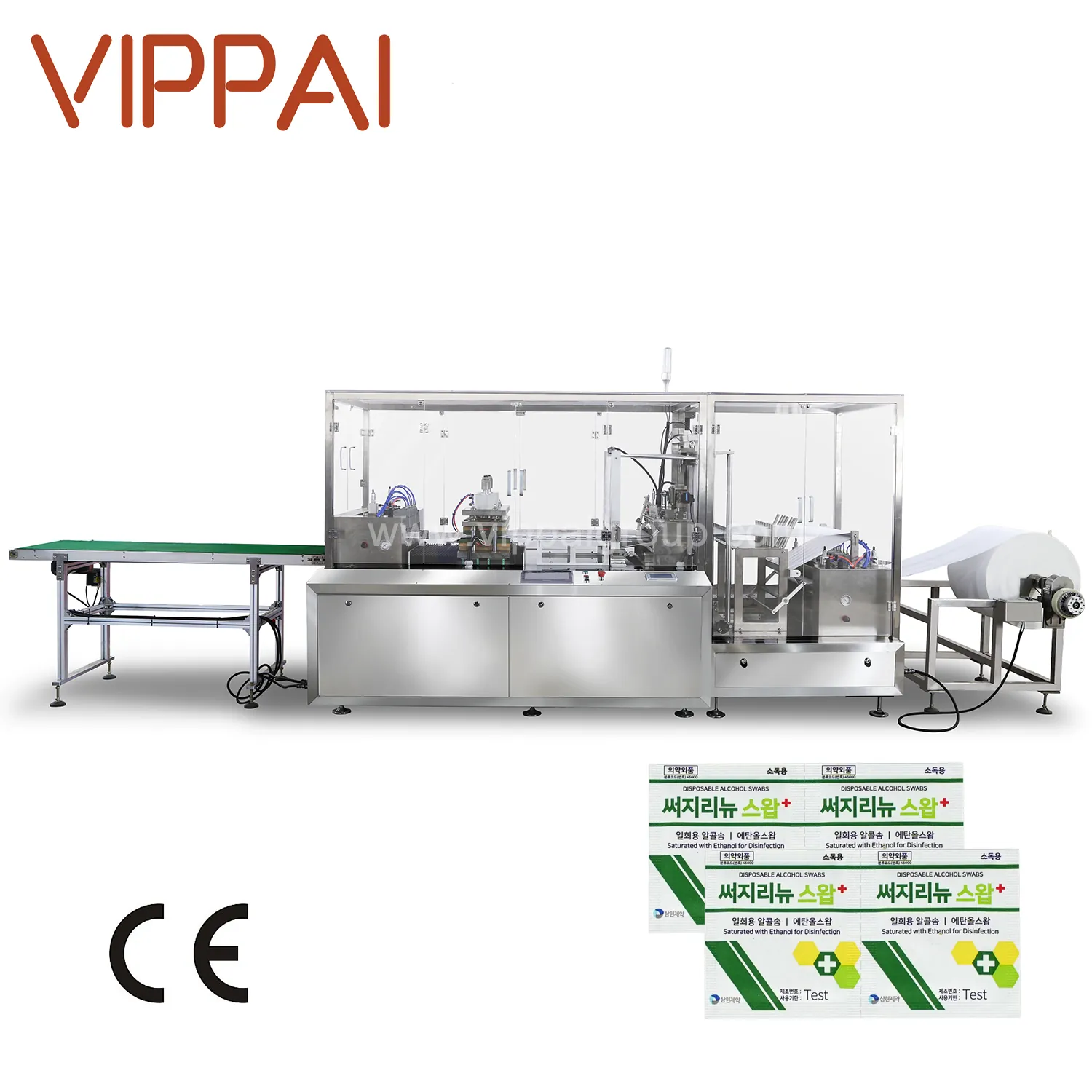In today's fast-paced world, efficiency and quality are key drivers in the manufacturing industry, particularly in the production of hygiene products like wet wipes. The technology behind these machines significantly impacts the output and quality of the final product. One such advanced technology is the reciprocating mechanism used in wet wipes making machines. This article will delve into the concept of reciprocating wet wipes making machines and introduce you to Vippai's VPD-800B Alcohol Pad Wet Wipes Manufacturing Machine, a leader in its class.
Understanding Reciprocating Wet Wipes Making Machines
What Does Reciprocating Mean in This Context?
In the context of wet wipes making machines, "reciprocating" refers to the type of motion used by the mechanical parts of the machine. A reciprocating motion is a repetitive, back-and-forth movement that is typically used in the cutting and stacking processes of the machine. This type of motion is crucial for achieving high precision and efficiency in the production of uniform and neatly packaged wipes.
Reciprocating machines are known for their:
Precision: They can achieve extremely accurate movements, which is essential for cutting wipes to precise dimensions.
Speed: Reciprocating machines can operate at high speeds, making them ideal for mass production settings.
Reliability: The simplicity of the motion leads to fewer mechanical complications and reduces downtime due to maintenance.
Advantages of Reciprocating Machines in Wet Wipes Production
The reciprocating action is particularly beneficial for products that require meticulous attention to detail, such as medical alcohol pads. The precise movement ensures that each wipe is perfectly sized and saturated, meeting stringent industry standards. Additionally, the efficiency of this motion allows for high production speeds without sacrificing quality, making it a preferred choice for manufacturers aiming to increase output and reduce costs.
Introducing the Vippai VPD-800B Alcohol Pad Wet Wipes Manufacturing Machine
Vippai's VPD-800B machine exemplifies the best of reciprocating technology. It is specifically designed for the production of alcohol pads, a product in high demand due to increasing hygiene awareness.
Key Features of the Vippai VPD-800B
Bag Type: Utilizes a Four-Side Seal packaging method, which is ideal for ensuring the sterility and moisture retention of each wipe, crucial for alcohol pads.
Speed: Impressive production capacity with speeds ranging from 800 to 1200 pieces per minute across 8 lines. This high speed facilitates large-scale production to meet market demands efficiently.
Power: Runs on 8.8KW, balancing power consumption with output in an eco-friendly manner.
Product Size: Produces wipes sized between 45-55 mm in length and width, perfect for single-use applications, ensuring each wipe is easy to use while providing adequate surface coverage for disinfection.
Why Choose the VPP-800B?
The VPD-800B is not just a machine; it's a comprehensive solution for the high-speed production of alcohol pads. Its reciprocating mechanism ensures that each cycle of the machine is optimized for speed, efficiency, and precision. This machine is an ideal choice for manufacturers looking to:
Maximize Production: Meet large orders and respond to market demands quickly.
Maintain High Standards: Ensure each product meets health and safety standards consistently.
Reduce Operational Costs: Less downtime and higher throughput mean lower production costs over time.
Conclusion
The reciprocating mechanism in wet wipes making machines like the Vippai VPD-800B is a game-changer for manufacturers. By combining speed, efficiency, and precision, this technology allows producers to stay competitive in a demanding market. Investing in such advanced equipment ensures that your production capabilities are not just current but future-ready, capable of delivering high-quality products consistently and efficiently. Embrace the cutting-edge technology of Vippai's reciprocating wet wipes making machine and set new industry standards in your production.

